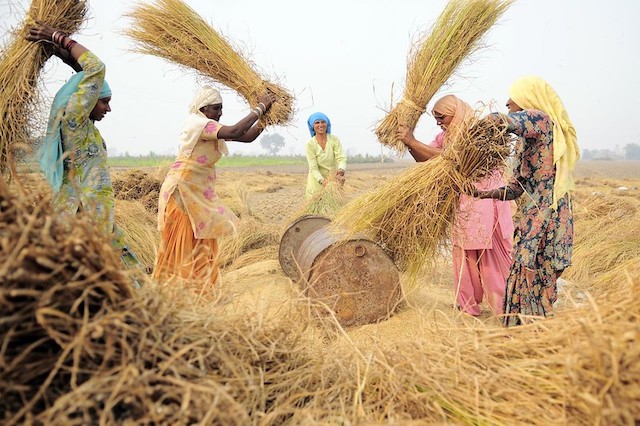Empowering Women in India
 Social constructionism has played a significant role in transforming the way most people look at the world. One specific identifier that has gained a lot of attention throughout the past century is gender roles. Some countries have embraced gender equality, whereas others are still navigating its implications. To explore this ongoing movement, here is an overview of gender norms for women in India.
Social constructionism has played a significant role in transforming the way most people look at the world. One specific identifier that has gained a lot of attention throughout the past century is gender roles. Some countries have embraced gender equality, whereas others are still navigating its implications. To explore this ongoing movement, here is an overview of gender norms for women in India.
The Situation
In rural and impoverished areas, women in India are still expected to conform to traditional roles. Girls are expected to marry by their early 20s and give birth to many children until they have birthed sons. They also serve the household needs. Slowly, more developed areas of India have begun to follow the more progressive ideology. However, remnants of this expectation for women are littered throughout Indian culture.
There is a significant difference in the treatment of men and women in India. In the traditional Indian family structure, families prioritize a son’s education because he has the most potential to earn money for the family. Families raise girls with the idea that they must marry off to another family. Often times, a girl’s schoolwork is not a priority when compared to learning to cook, clean and do other household chores.
The Burden of Being a Woman
In impoverished areas, having a daughter is seen as a burden because of the role that women are expected to play. The father must marry the daughter off to a stable family. However, the financial burden is huge. A Dowry is a reward that the groom’s family seeks from the bride’s family before getting married. Though technically illegal in India now, it is an old tradition that turns the institution of marriage into a bargain. For poor families, a dowry is a huge burden on the family. If not paid, the groom’s side of the family can back out of the arrangement.
After the marriage ceremony, Indian women are expected to stay home to cook, clean and give birth to children. According to a study done by the Indian Journal of Community Medicine, domestic violence is more likely to occur with younger females, women who have a lower income, women who are less educated and unemployed and women who are part of a lower caste.
Further, the average female literacy rate in India is 65.5%, which is just under two-thirds of the population of women in India. Only 31.2% of women participate in the labor force, leaving more than 50 million women without work or education. This is an alarming number of people for a country as densely populated as India.
The Azad Foundation
Organizations are seeking to lower the gap by helping empower women to overcome difficult situations. Various organizations provide women in India with resources to defend themselves in harmful situations and aid in the fight for equal rights. The Azad Foundation is one of them. With headquarters in Delhi and many offices around the country, this foundation reaches women living in rural areas who face domestic violence at home. The Azad Foundation’s purpose is to equip these women with resources and knowledge to “earn livelihoods with dignity.” The organization does this with various programs.
- Women on Wheels is one program that aims to teach marginalized women to drive so they can earn a living. According to the Azad Foundation, teaching women to become professional drivers is key to integrate them into the mainstream economy. This program works with women who are mostly from the slums. Most of these women in India have not finished grade school and aren’t able to get high-skill jobs. The program uses module-based teaching. The education includes technical modules that teach women in India to drive, self-development modules that teach English and first aid training and empowerment modules that teach self-defense and gender rights. After training the women, Sakha Consulting Wings, Azad’s partner, provides placement within the private chauffeur industry.
- Community Engagement Programs focus on a variety of initiatives. These initiatives include Men for Gender Justice, which increases men’s awareness and support of gender equality. Additionally, the Parvaz Feminist Leadership Program teaches women to become leaders within the community and encourages them to become catalysts for change. Azad Kishori 9 to 12 holds workshops around the country to educate girls on patriarchy, sexual health and women’s legal rights. The foundation also participates in annually One Billion Rising and 16 Days of Activism against Gender-Based Violence. All of these initiatives support engagement and social justice for women in India.
- The final branch of the Azad Foundation is the research and advocacy portion. To reach the goal of creating a national impact, the organization conducted research on a variety of gender-based issues and used these reports to launch social change. Azad Foundation also works closely with the government to create and change policies that empower women in India.
Future Change
While many social and cultural changes need to take place to improve gender equality, organizations like Azad Foundation have made a great impact on women in India. Empowering more women will transform the patriarchy that has been such a large part of Indian culture.
– Shreya Chari
Photo: Flickr
